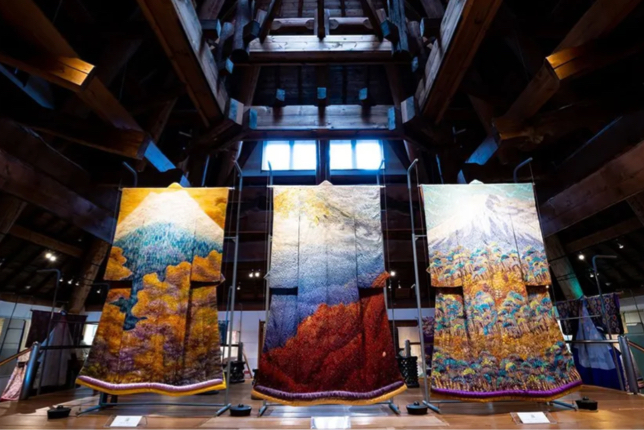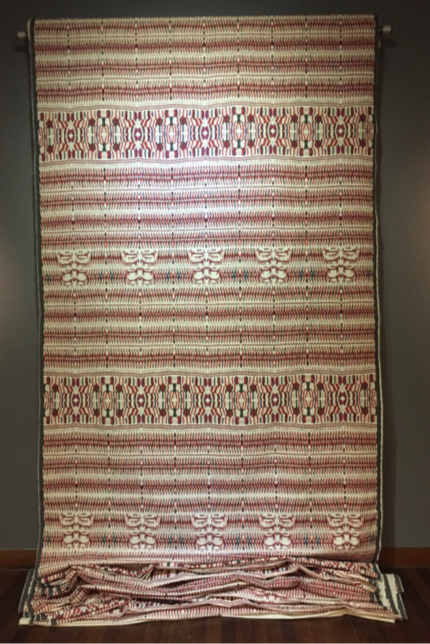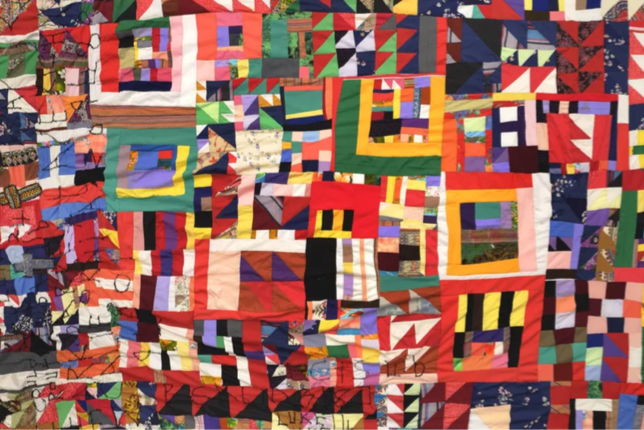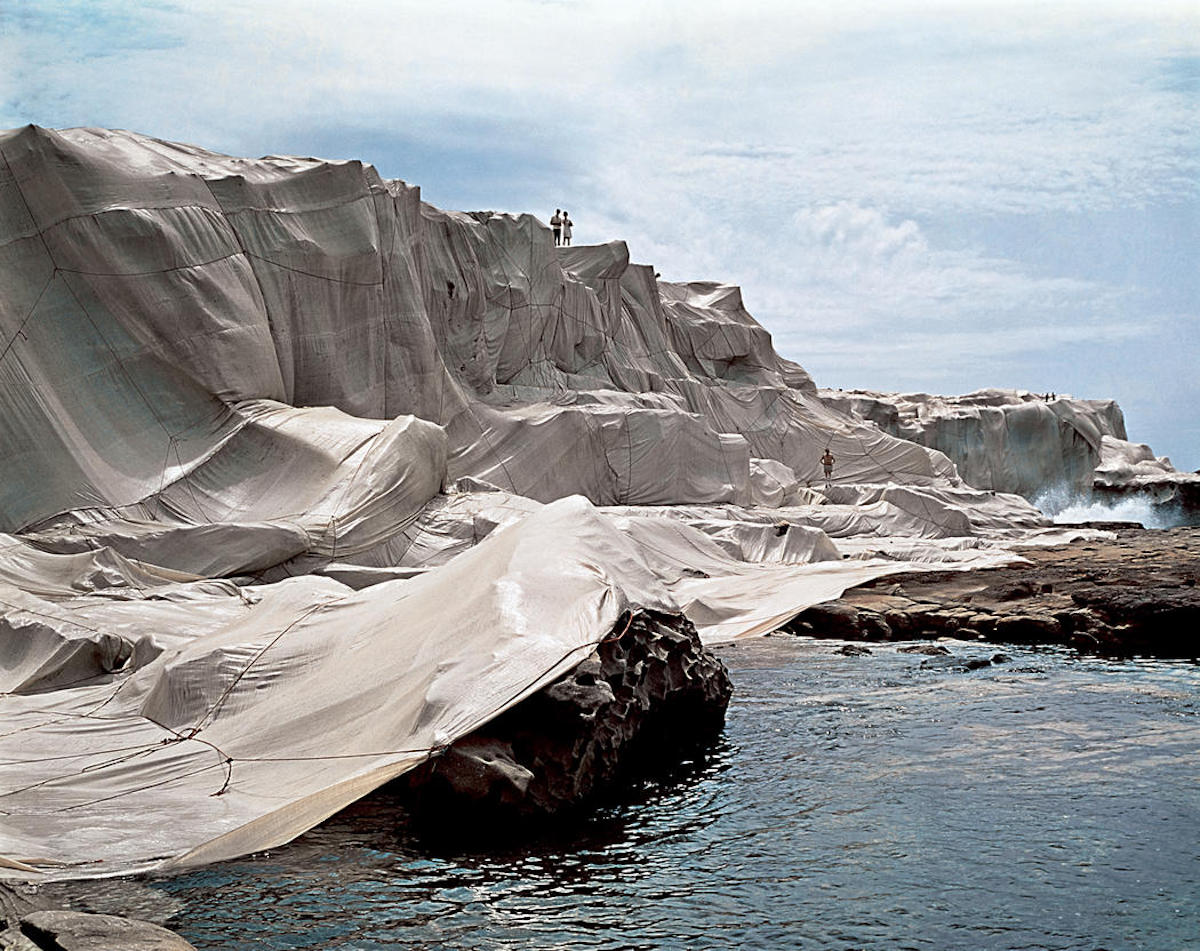
8 Textile Artists You Should Know
Textile art has long been popular among art collectors. Made from malleable materials such as yarn or thread, textiles are created through the interlocking of fibers, either by hand or with the use of a loom. By braiding, knotting, knitting, weaving, crocheting, bonding, tatting, and felting, textile artists set to work. Artworks of this medium can take the form of tapestry, sculpture, rug, carpeting, pieces of wall art and geotextile. Unlike traditional works of fine art, textile artworks can pertain to an aesthetic as well as functional purposefulness. Here at Artsper, we have curated a list of 8 textile artists we think you should discover (if you haven’t already done so)!
1. Faith Ringgold

The textile artist Faith Ringgold uses her quilts, paintings and other multimedia works as vehicles for storytelling. Articulating narratives from her personal life as well as from the experience of African Americans against the backdrop of the world of racial politics in the United States. Born in Harlem in 1930, Ringgold was encouraged by her fashion designer mother to pursue an artistic career. At the time, it was extremely difficult for a black artist to be represented by a gallery. She made her first quilt, Echoes of Harlem, in 1980, in collaboration with her mother. and later developed her distinctive painting style through quilting.
2. Magdalena Abakanowicz

The godmother of installation art, Polish sculptor Magdalena Abakanowicz is perhaps best known for her vast artwork named Abakans. The roughly woven forms hang imposingly. Interpreted in many ways, some suggestions have included bodily appendages and female genitalia. Growing up in Communist Poland, Abakanowicz first began weaving discarded rope fibres. To Magdalena Abakanowicz, textile art expresses the fragility and strength of the human experience.
3. Enid Marx

British textile designer, printmaker and illustrator, Enid Marx (1902-1998), shaped midcentury pattern through his idiosyncratic abstract shapes and nature-inspired motifs. Marx designed many things from industrial fabrics, to book jackets and even Elizabeth II’s coronation stamps between the period of 1930s and 1960s. Her most famous design was used for the moquette on the underground for Transport for London. Her style borrowed much from folk and popular art, often block printing with natural dyes.
4. Peter Collingwood

Perhaps the most famous of the textile artists of this list, Peter Collingwood is best-known for his contribution to British weaving of the 20th Century. His technique, seen here in his Macro Gauze wall hangings, has defined textile art in the wake of his legacy. Created in precise geometries, Collingwood twisted and crossed threads on a homemade warp-dominant loom. Not always destined on the path of artistry, Collingwood first discovered the loom whilst training to be a doctor in the Royal Army Medical Corps. Taking a step back from medicine, he set up his own studio in 1952. Collingwood went on to develop a pioneering practice of speed-weaving which he called ‘shaft switching.’
5. Sheila Hicks

American artist Sheila Hicks moves effortlessly between miniature-scale ‘minimes’ to vast textural sculpture of huge dimensions. Scale is something Hicks has truly mastered. In Saffron Sentinel, the piling of colorful felted boulders floor to ceiling produces a foam-like, evasive effect. Having travelled to explore the traditional fabrics and artisanal techniques of Chile, Peru, Bolivia and Colombia, Hicks learnt from collaborating with local artists in a formative part of her early career.
6. Itchiku Kubota

Japan is known for its many textile artists. Itchiku Kubota (1917-2003), is best known for his expressive revival of a lost 16th Century tie-dying technique called tsujigahana. Kubota became enamored by recreating the technique after seeing it at the Tokyo National Museum. He made tsujigahana his own, by involving Shibori stitching and tying, and using many different dyes that mix and interact with the binding to create stunning shades and shapes. His most famous work, The Symphony of Light, is a series of 36 kimonos. Hung together they represent the four seasons, with the color and three-dimensionality creating vibrant and textured landscapes.
7. Constanza Urrutia Wegmann

Textile designer Constanza Urrutia Wegmann was born in 1979 in Santiago de Chile. She graduated in Visual Arts at the University of Chile, and has been a teacher at the Atelier Central d’Art Textile since 2007 and a university professor since 2019. Ella has exhibited in international and national exhibitions such as London Craft Week, the Biennale Revelations at the Grand Palais, the 15th Tapestry Triennial at the Central Textile Museum in Lodz, Poland, and the 9th International Shibori Symposium at the National Silk Museum of China in Hangzhou, China. Through the textile presentations, the artist evokes her heritage, as well as events in her country’s history that have marked its political and social development. The gesture of weaving refers to the intention of revisiting the different wefts that construct the relationship between memory and textile, while drawing inspiration from the ancient techniques of the pre-Columbian Andes.
8. Rosie Lee Tompkins

Artist Effie Mae Howard (1936–2006), who went by the pseudonym Rosie Lee Tompkins, made abstract works from patches of diverse materials. From velvet to fake fur, her textiles are said to have been inspired her religious faith. The meditative quilt making technique was taught to her by her mother. In 1985, she met Eli Leon, a collector of African-American quilts, who included her in a touring exhibition Who’d A Thought It: Improvisation in African-American Quiltmaking, which first opened in San Francisco.
Our roundup of textile artists
From this selection, we can conclude upon the versatile nature of textile art. This form—long time appreciated by contemporary artists and designers alike—has allowed for much experimentation in pattern and texture. Whilst this list of contemporary textile artists we think you should know is not exhaustive, we hope to have brought to your attention a taste of what is out there in the world of this material medium.

About Artsper
Founded in 2013, Artsper is an online marketplace for contemporary art. Partnering with 1,800 professional art galleries around the world, it makes discovering and acquiring art accessible to all.
Learn more













